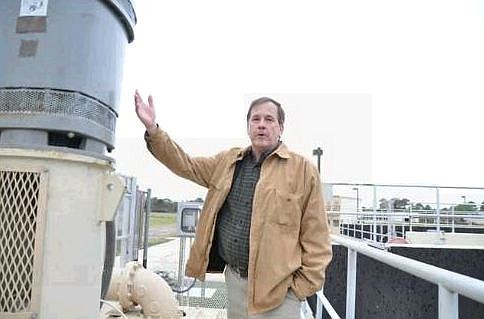- April 18, 2024
-
-
Loading

Loading

UPDATE 12:37
City Council voted 4-1 to pass Lewis' motion. Councilman Bill McGuire cast the dissenting vote.
The first rate increase will take effect April 1. The second, for fiscal year 2014, will take effect in October.
McGuire said he didn't feel that city staff had exhausted all of its options for funding utility infrastructure needs without so great a rate increase for residents. He suggested finding new ways to take down costs in-house to raise some of the money needed.
However, DeLorenzo said many departments, such as the building department, are enterprise funds, so any money saved there could not be used for utility projects anyway.
"At this point, I think it would be irresponsible not to pass this motion," Palm Coast Mayor Jon Netts said moments before the vote.
UPDATE 12:33 p.m.
Councilman Bill Lewis made a motion to adopt the second utility rate increase, which would raise rates by an average of $4.16 per month for each household.
Councilman Jason DeLorenzo seconded the motion.
"As far as postponing the vote, to my count, this is our sixth time we have met about this, several times with public comment," DeLorenzo said. "I believe that we need to make these improvements. We need the ability to make these improvements, and if we continue to wait, that's just going to put further pressure on the rate payers."
DeLorenzo said he preferred the second option because pushing growth-related infrastructure projects back would put more of the responsiblity of paying for greater utility capacity on the shoulders of new residents.
"It makes more sense to have a clearer picture of our growth (in 2015) and to put those additional costs on those new rate payers," he said.
UPDATE 12:15 p.m.: Residents: City is unprepared for this decision
The meeting opened with several presentations about the financial state of the utility, the capital improvement projects planned for it and a breakdown of the two options the city will decide between.
Council members punctuated the presentations with questions. When the meeting opened for public comment, residents questioned whether the council itself understood the issue it was voting on.
“It seems to me that there was a lot of information given here that even the council was asking for clarification on,” resident Diane Layng said. “I would encourage the council to postpone making an decision on raising our rates until you have had another opportunity to digest the information given today.”
Another resident, Vincent A. Ligouri, told City Council that voting Tuesday would equate to a “complete disregard for your citizenry.”
“You are nowhere near ready to make a decision, based on the nature of your questions today,” he said.
However, Alan Peterson, who formerly sat on the Flagler County Board of County Commissioners and the Palm Coast City Council, expressed support for the utility increases.
“We’ve got new regulations; we’ve got to meet them,” Peterson said, referencing the $10 million project planned to bring Palm Coast’s Water Treatment Plant 2 up to new Environmental Protection Agency standards. “If you try to fight the EPA, you’re going to have a mess of legal problems.”
Peterson also said it was appropriate to budget money for repairs to an increasingly aging utility system.
ORIGINAL STORY:
The audience for today’s meeting of the Palm Coast City Council spills out into the lobby of the Palm Coast Community Center. The council will discuss today two alternate options for proposed water and sewer rate increases, a proposal that has received wide criticism from residents.
The first option is the originally proposed increase, which will account for maintenance- and growth-related expenses for the utility for the next five years. It includes infrastructure projects for the existing utility, funds for renewal and replacement of existing parts, money to maintain an operating reserve and growth-related capital projects.
The second is similar to the first, but it pushes growth-related capital projects outside of the scope of the city’s current five-year plan, reducing the need for capital projects by $24 million. Doing this would require that the city reevaluate its plan in 2015. If the city’s population grows enough to require planning for an additional wastewater treatment (sewer) plant, rates could rise again then.
Check back for updates as the meeting progresses. Read our past coverage on utility increases here and here.